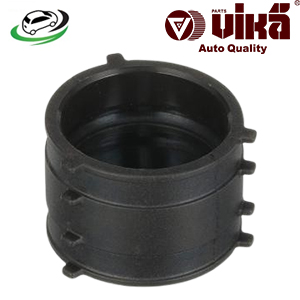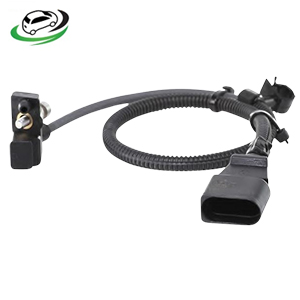-6%
Get Crankshaft Pulse Sensor AUDI A2 (8Z0) / VW Polo III (6N1)/ Polo (9N/9A)/ Lupo I (6X1/6E1)/ Caddy II MPV (9K9B) 030957147T
The crankshaft pulse sensor, also known as the crankshaft position sensor (CKP sensor), is a critical component in modern vehicles. It plays a vital role in monitoring the position and speed of the crankshaft, which is essential for the engine’s performance, fuel efficiency, and emissions control. Understanding the function, types, benefits, signs of failure, and maintenance of the crankshaft pulse sensor is crucial for maintaining optimal engine performance.
What is a Crankshaft Pulse Sensor?
The crankshaft pulse sensor is an electronic device that measures the rotational position and speed of the crankshaft. This data is sent to the engine control unit (ECU), which uses it to adjust the timing of fuel injection and ignition. The sensor helps ensure that the engine operates efficiently, reducing emissions and improving performance.
Components of the Crankshaft Pulse Sensor
- Sensor Housing: The outer casing of the sensor, which protects the internal components and provides mounting points.
- Magnetic Pickup or Hall Effect Sensor: The core component that detects the rotational position of the crankshaft. Magnetic pickups use a magnet and coil to generate a voltage signal, while Hall effect sensors use a magnetic field and semiconductor to produce a digital signal.
- Sensor Tip: The part of the sensor that is positioned close to the crankshaft, often near a toothed wheel or reluctor ring.
- Wiring Connector: The electrical connector that transmits the sensor’s signals to the ECU.
Function of the Crankshaft Pulse Sensor
The crankshaft pulse sensor’s primary function is to provide the ECU with precise information about the crankshaft’s position and speed. This information is crucial for several engine functions.
Key Functions
- Engine Timing: The sensor helps the ECU determine the exact position of the crankshaft, which is essential for timing the ignition and fuel injection events. Accurate timing ensures that the engine runs smoothly and efficiently.
- Fuel Injection Control: By providing real-time data on the crankshaft’s position, the sensor allows the ECU to adjust the timing and amount of fuel injected into the combustion chamber, optimizing fuel efficiency and performance.
- Ignition Timing: The sensor’s data helps the ECU control the ignition timing, ensuring that the spark plug fires at the optimal moment for complete combustion and maximum power output.
- Engine Synchronization: The crankshaft position sensor works in conjunction with the camshaft position sensor to synchronize the timing of the engine’s valves and pistons, ensuring smooth engine operation.
Types of Crankshaft Pulse Sensors
Crankshaft pulse sensors come in different types, each utilizing various technologies to detect the crankshaft’s position and speed. The two main types are magnetic (inductive) sensors and Hall effect sensors.
Magnetic (Inductive) Sensors
- Characteristics: Magnetic sensors use a magnet and coil to generate an alternating voltage signal as the crankshaft rotates. The signal is generated by changes in the magnetic field caused by the movement of a reluctor ring or toothed wheel.
- Advantages: Magnetic sensors are known for their durability and reliability. They can operate in harsh environments and are less susceptible to electrical noise.
- Disadvantages: These sensors can be less accurate at very high engine speeds and may require periodic calibration to maintain optimal performance.
Hall Effect Sensors
- Characteristics: Hall effect sensors use a magnetic field and semiconductor material to generate a digital signal. The sensor detects changes in the magnetic field caused by a toothed wheel or reluctor ring.
- Advantages: Hall effect sensors provide high accuracy and precise signal generation. They are less affected by temperature changes and electrical noise compared to magnetic sensors.
- Disadvantages: These sensors can be more sensitive to physical damage and may be affected by high temperatures or contaminants.
Benefits of the Crankshaft Pulse Sensor
The crankshaft pulse sensor provides several benefits that are critical for maintaining the engine’s performance, efficiency, and emissions control.
Improved Engine Performance
- Accurate Timing: By providing precise data on the crankshaft’s position, the sensor ensures accurate timing of fuel injection and ignition events, resulting in smooth engine operation and optimal power output.
- Enhanced Fuel Efficiency: The sensor’s data allows the ECU to adjust fuel injection timing and quantity, optimizing fuel consumption and improving overall fuel efficiency.
Reduced Emissions
- Optimal Combustion: Accurate timing of fuel injection and ignition helps achieve complete combustion, reducing the production of harmful emissions and contributing to a cleaner environment.
- Emissions Control: The sensor’s data helps the ECU manage emissions control systems, such as the catalytic converter and exhaust gas recirculation (EGR), ensuring compliance with emissions standards.
Enhanced Engine Reliability
- Preventive Maintenance: By monitoring the crankshaft’s position and speed, the sensor helps detect potential issues early, allowing for timely maintenance and reducing the risk of engine damage.
- Reduced Wear and Tear: Accurate engine timing and fuel control contribute to reduced wear and tear on engine components, extending the engine’s lifespan and improving overall reliability.
Signs of a Faulty Crankshaft Pulse Sensor
A malfunctioning crankshaft pulse sensor can lead to a range of engine performance issues. Recognizing the signs of a faulty sensor is essential for addressing problems before they escalate.
Common Symptoms of a Faulty Sensor
- Engine Misfires: A malfunctioning sensor can cause incorrect timing of fuel injection and ignition, leading to engine misfires and rough idling.
- Difficulty Starting the Engine: If the sensor fails, the ECU may not receive accurate data on the crankshaft’s position, making it difficult to start the engine or causing it to start intermittently.
- Reduced Engine Power: Inaccurate timing can lead to reduced engine power and acceleration, affecting overall performance and drivability.
- Check Engine Light: A faulty crankshaft position sensor can trigger the check engine light on the dashboard. Diagnostic trouble codes (DTCs) related to the crankshaft sensor may be stored in the ECU.
- Poor Fuel Economy: Incorrect timing of fuel injection and ignition can lead to inefficient combustion, resulting in poor fuel economy and increased fuel consumption.
- Stalling: In severe cases, a faulty sensor can cause the engine to stall or run inconsistently, affecting the vehicle’s drivability and safety.
Maintenance and Inspection of the Crankshaft Pulse Sensor
Regular maintenance and inspection of the crankshaft pulse sensor are essential for ensuring its proper functioning and preventing potential issues.
Inspection Tips
- Visual Inspection: Periodically inspect the sensor and its wiring for any signs of physical damage, corrosion, or loose connections. Ensure that the sensor is securely mounted and properly aligned with the crankshaft.
- Check for Fault Codes: Use a diagnostic scan tool to check for any trouble codes related to the crankshaft position sensor. This can help identify issues and determine if the sensor needs replacement.
- Monitor Engine Performance: Pay attention to any changes in engine performance, such as misfires, difficulty starting, or reduced power. These symptoms may indicate a problem with the crankshaft position sensor.
Maintenance Tips
- Keep the Sensor Clean: Ensure that the sensor and its mounting area are clean and free of debris. Dirt or contaminants can affect the sensor’s performance and accuracy.
- Check Wiring and Connectors: Regularly inspect the wiring and connectors associated with the sensor for any signs of wear or damage. Repair or replace any damaged wiring to ensure proper signal transmission.
- Replace Worn Sensors Promptly: If you notice any signs of a faulty sensor, replace it as soon as possible to avoid further issues. Delaying replacement can lead to more significant engine problems and reduced performance.
Replacing the Crankshaft Pulse Sensor
Replacing the crankshaft pulse sensor is a relatively straightforward process that can be done with basic tools. Here’s a step-by-step guide to help you through the replacement process.
Replacement Process
- Prepare the Vehicle: Ensure the engine is cool and the vehicle is parked on a level surface. Disconnect the battery to prevent electrical shorts.
- Locate the Sensor: Find the crankshaft position sensor, which is typically located near the crankshaft or harmonic balancer. Refer to the vehicle’s service manual for the exact location.
- Remove the Old Sensor: Disconnect the wiring connector from the sensor. Remove any mounting bolts or screws securing the sensor to the engine block. Carefully pull the sensor out of its mounting position.
- Install the New Sensor: Position the new sensor in the mounting hole and secure it with the mounting bolts or screws. Reconnect the wiring connector to the sensor.
- Reconnect the Battery: Reconnect the battery terminals and ensure that all electrical connections are secure.
- Check for Leaks and Test the Engine: Start the engine and check for any leaks or abnormal noises. Monitor engine performance to ensure that the new sensor is functioning correctly.
- Clear Fault Codes: If the check engine light was triggered, use a diagnostic scan tool to clear any stored fault codes and verify that the issue has been resolved.
Follow us on Facebook for more parts.



